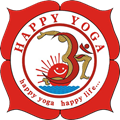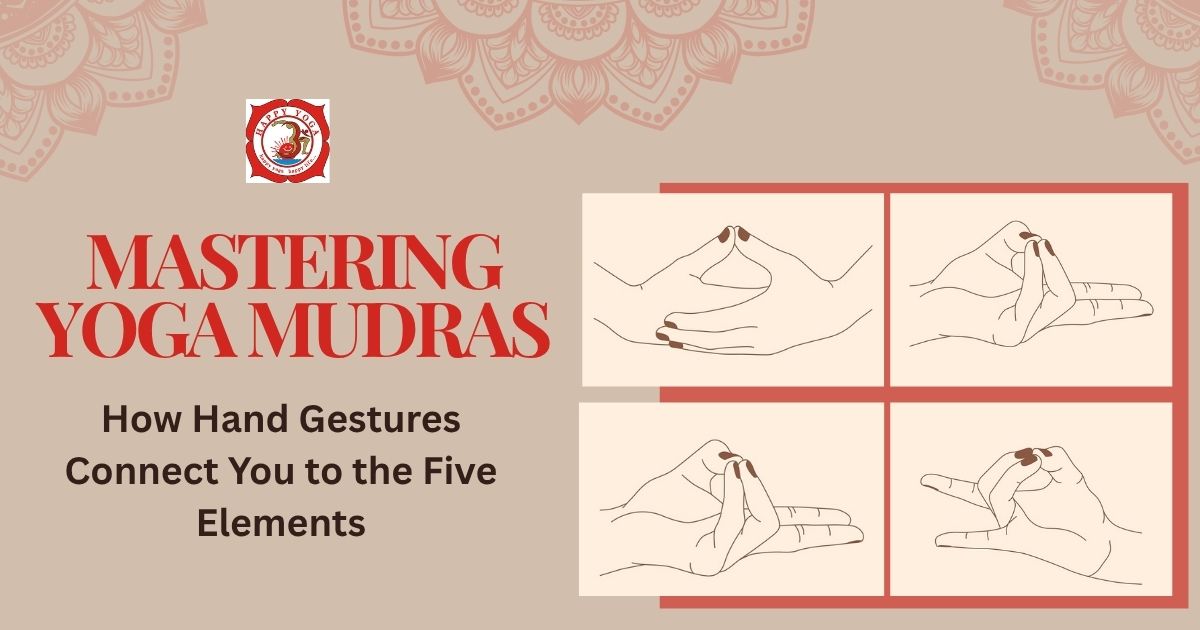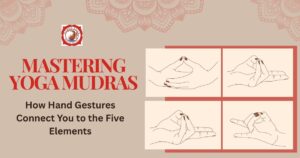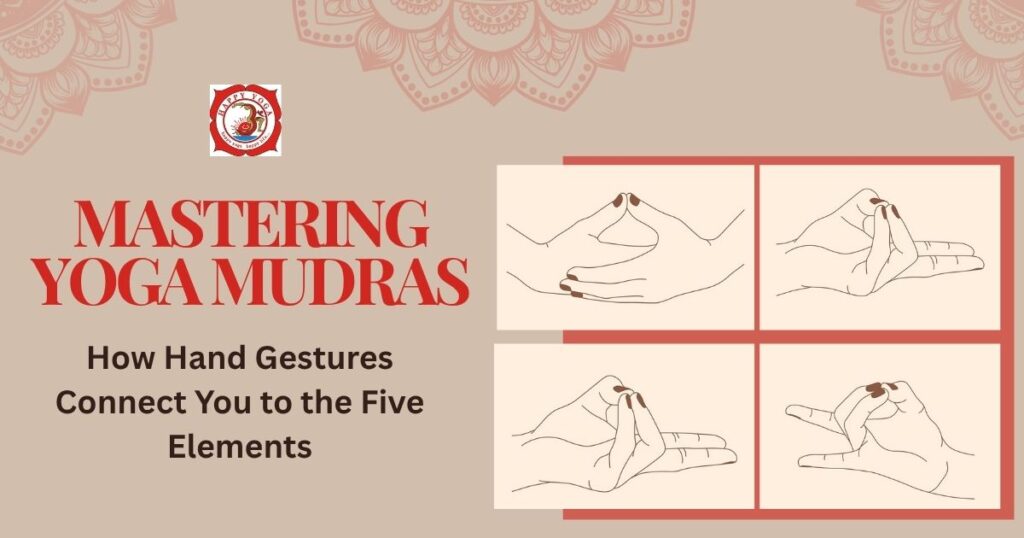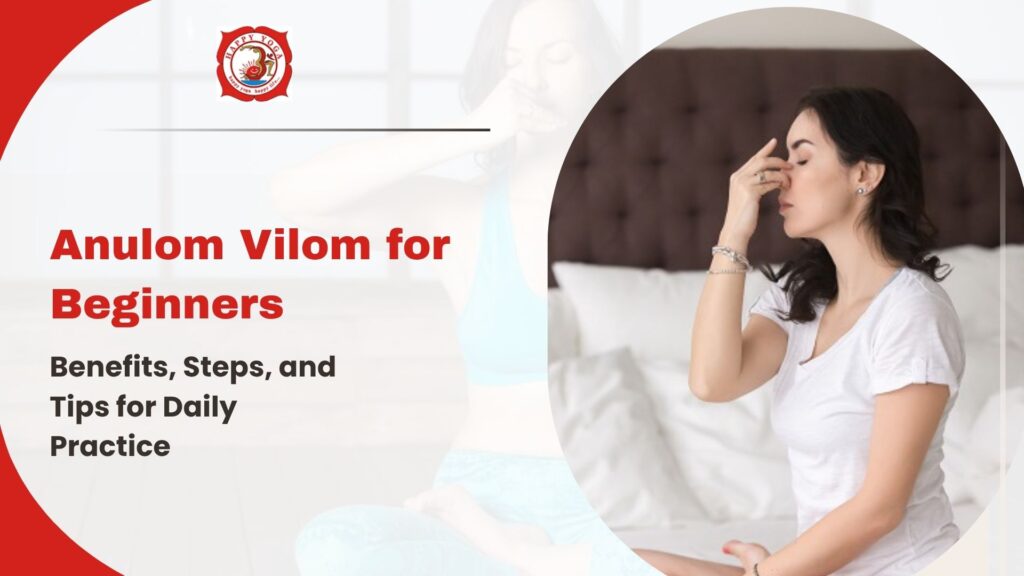Secrets of Yoga Mudras
Before the mantras were chanted and asanas were performed, Hand gestures or mudras, were used to guide our energy, balance it, calm the mind, and awaken inner peace. They were not just physical signs, but they served as a signal to both body and mind. When COVID-19 affected people worldwide, the National Institutes of Health reported a change in the population. The effects of mudras have proven to have a positive impact on people by improving their immune system and metabolism.
Today, in the age in which we are living, we are controlled by endlessly watching screens and taking stress; these gestures, which have come from ancient India, are reappearing in yoga sessions, but also in therapy sessions, as well as in neuroscience labs, because the silence of doing mudra speaks louder than ever.
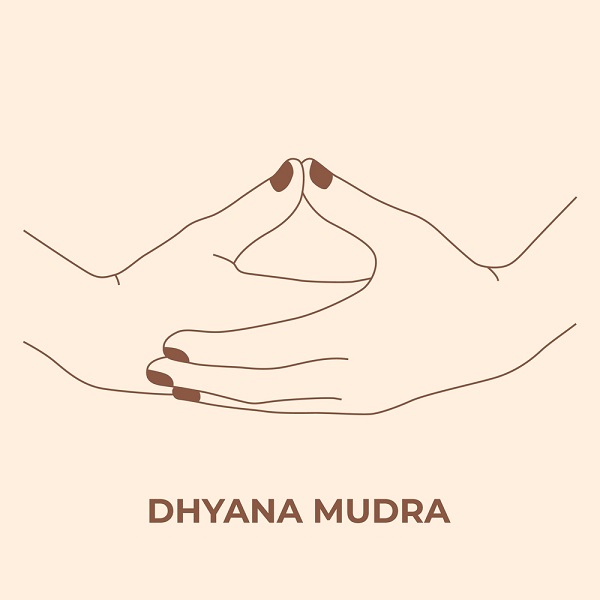
The Ancient Roots of Yoga Mudra (Where It All Begins)
Yoga mudras’ origins in India have been dated back to spiritual texts. Saints used them for deep meditation, and some of the priests during their rituals, as well as healers practicing Ayurveda. The Vedas first discovered the importance of mudra and meditation; according to them, it was the simplest way to reconnect with the divine powers [connecting to God], receiving blessings and protection.
Due to this practice, it started spreading to other spiritual traditions like Buddhism, Jainism, and yoga. In Buddhism, Buddha images or sculptures often depict a mudra position, such as abhaya and dhyana mudra, which lends them spiritual significance. For them, mudras were essential and played an integral part in meditation, as they showed compassion, wisdom, and enlightenment. In Jainism, the mudras are represented by different aspects such as doctrine and nonviolence. Well, in yoga, mudra plays a significant role in balancing the energy flow in the body and enhancing its power. This is achieved through a deeper cooperation with breathing techniques, asanas, and meditation, which are used in yoga.
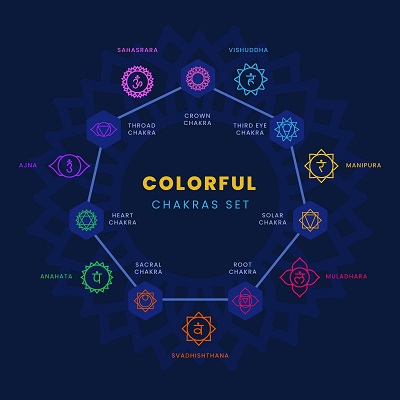
Mudras and the Five Elements
One of the most interesting facts about mudras is their relationship with the five elements, which are also known as pancha mahabhuta in yogic texts and ayurvedic texts. These five elements shape the building blocks of all life, including the human body, and their five fingers represent these elements. While doing mudras, if we join our hands or shape them in a certain way, then it can influence the balance in our body. Let’s explore one by one—
1. The Ring Finger Represents Earth (Prithvi)
The Earth element denotes stability and structure, which represents bones, skin, and hair.
2. The little finger represents Water (Jal)
The water element manages our fluidity, emotion, circulation, and flexibility.
3. The middle finger represents space (Akasha)
The space element governs our intuition, consciousness, communication, and inner growth.
4. The index finger represents Air (Vayu)
The air element governs our respiratory system, joints, and nerves.
5. The thumb finger represents fire (Agini)
The thumb element denotes our digestion, vision, and metabolism.
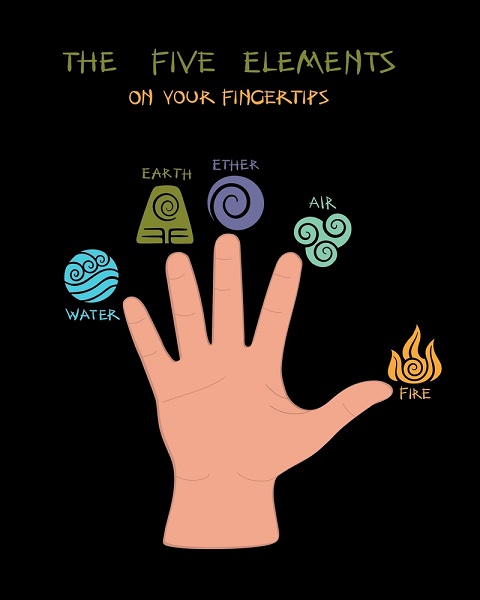
The Five Categories of Yoga Mudras
Mudras are like a toolkit for personal growth that everyone needs in their life, which helps in physical, mental, and spiritual aspects. To understand mudras deeply, they are categorised into five, which are discussed below.
1. Hasta Mudra
Hasta mudra is a basic and beginner-friendly mudra that involves our hands and palms, redirecting the flow of energy. Each gesture of our hand stimulates our brain, which is our nervous system. These mudras are often used in meditation and in classical dance to focus and achieve clarity. Examples of hasta mudra include gyan mudra, vayu mudra, prithvi mudra, apana mudra, and shuni mudra.
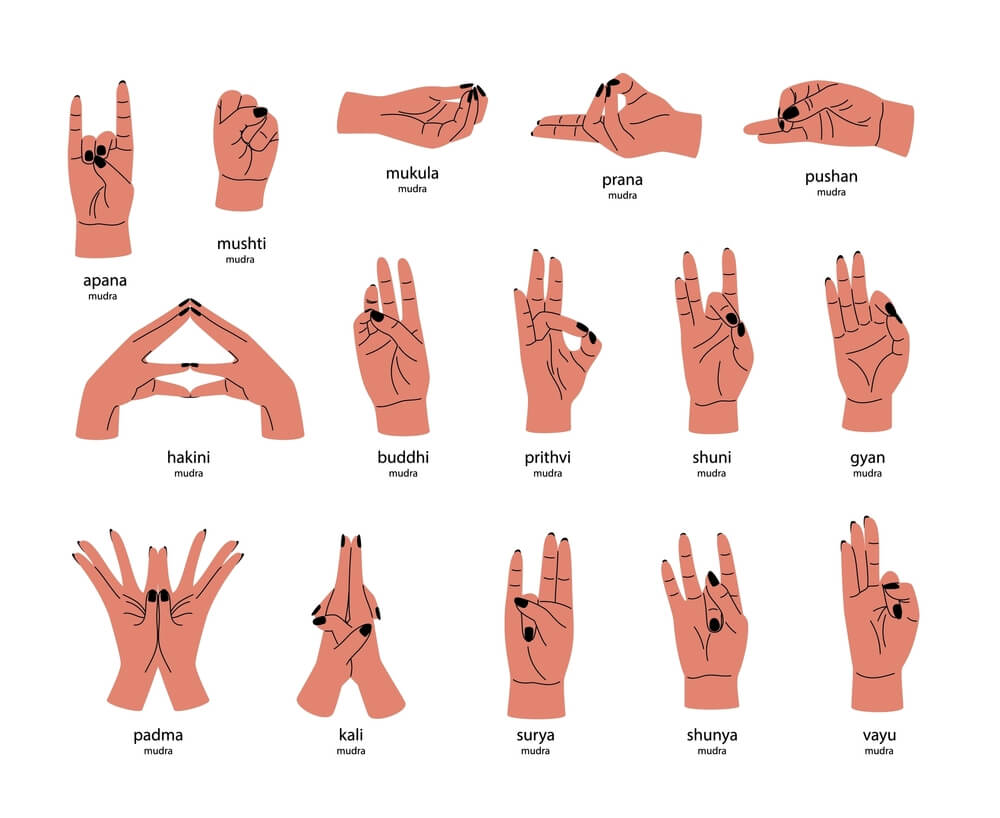
2. Mana Mudra
Unlike hasta mudra, which involves the hands, mana mudra focuses on the eyes, tongue, and gaze direction, all of which influence our mental state and help in calming our mind and balancing our emotions. These mudras are specifically for activating chakras, training the mind, and opening the doors of inner intuition and power.
Examples of mana mudra include sambhavi mudra, Nasikagra Drishti, khechri mudra, bhrumadhya drishti, and kaki mudra.
3. Kaya Mudra
Kaya mudra involves the entire body posture and is often blended with breath retention and energetic locks. This mudra conveys that mudras are not just limited to meditation but are also used in performing yoga asanas, which improve flexibility and core strength. The most common types of kaya mudras include viparita mudra, prana mudra, yoga mudrasana, and khechari mudra.
4. Bandha Mudra
Bandha mudras are a specific type of mudra that involves locking the body with hand gestures and is used to control the energy from within. There are three main types of bandha mudra: mula bandha, which is the root lock, applied at the pelvic area; uddiyana bandha, which is applied at the abdominal lock; and jalandhara bandha, which is used at the throat lock.
5. Adhara Mudra
Adhara mudra is a hand gesture that connects with Earth’s energy, promoting grounding and stability. It is believed to help individuals connect with their physical body and promote stability in their life.
The Relation Between Mudra and Meditation
Mudra and meditation are directly linked to each other, as mudra serves as a powerful tool to deepen the meditative experience. In contrast, meditation is used to activate our inner consciousness and awareness. When a mudra like gyan mudra or prana mudra is performed in conjunction with meditation, it opens all the energy channels associated with that hand position. As the mind becomes calm and awareness is directed inward, the individual becomes highly aware due to the hand mudras.
This is not limited to calming the mind and awareness; it also includes mudras with meditation, which open the chakras, which are again the energy channels. Each chakra has its meaning and holds emotions and feelings and more. Practicing mudra activates the chakras, giving you infinite energy and power.
The Relation Between Mudra and Mantras
The connection between mudras and mantras lies at the heart of yogic and tantric practices, where they were used to deepen the consciousness and direct inner energies. Mantras are sound vibrations like vammmm, and om namah shivaya, which are designed to purify and unlock the higher states of awareness, whereas mudras are hand gestures. When these are used together, they create a powerful energy from within as well as for the outer environment.
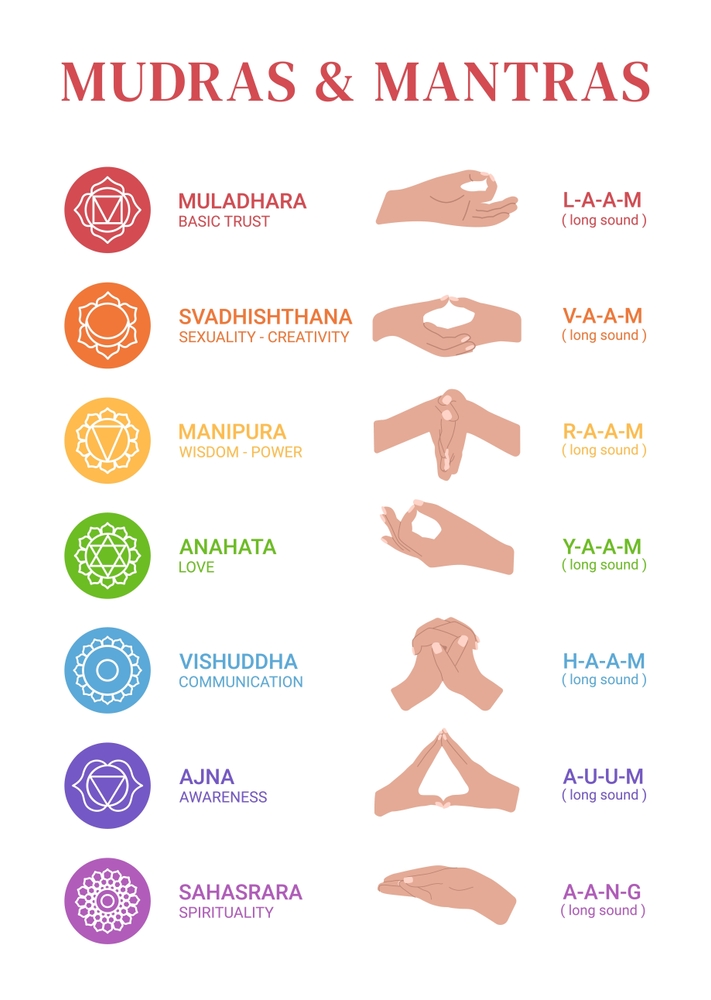
Main Mudras Used in Yoga Practice
Although innumerable mudras play a specific role in balancing and healing our mind and body, there are particular mudras used in yoga—
- Gyan Mudra is connected to the air element, which increases our concentration, clarity, and awareness.
- Chin mudra, known as the gesture of consciousness, is connected with the air element and is similar to Gyan mudra. Chin mudra encourages groundedness and calmness.
- Prana Mudra, known as the mudra of life force, which is connected with fire, earth, and water elements, boosts our immunity and energy.
- Apana Mudra, known as the mudra of elimination, which is connected with Earth and space, helps in detoxification and helps in weight loss.
- Surya Mudra, known as the mudra of the sun, which is associated with fire and the Earth element, increases heat from within and helps in increasing the metabolism.
- Shuni Mudra, known as the mudra of patience, promotes discipline and inner strength and opens the third eye chakra.
- Vayu Mudra, known as the mudra of air, is associated with the air element, calming anxiety and reducing nervousness.
- Varun Mudra, known as the mudra of Water, which is associated with the water element, helps in relieving dryness and improving skin health
- Anjali Mudra, known as the prayer gesture, allows for gratitude, inner peace, and connection.
- Hridhya Mudra, known as the heart gesture, helps in opening up the heart and coordinates the heart chakra.
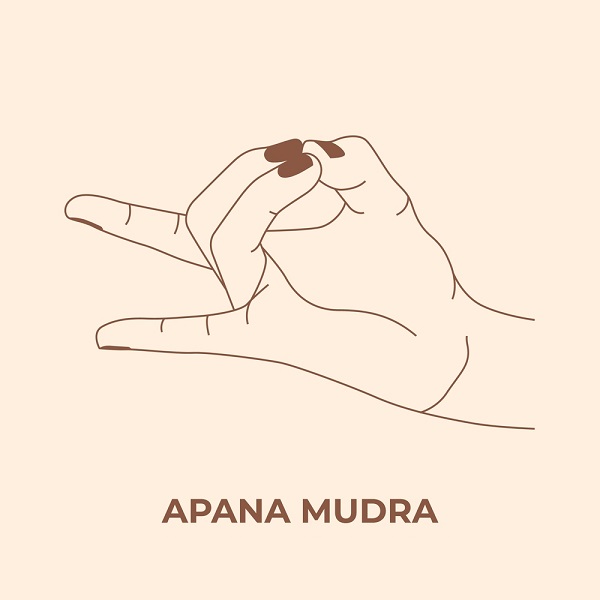
The Correct Way to Practice Mudras
Although mudras may look simple on the outside, their true powers only work when practiced with the proper alignment, awareness, and consistency. They are not just hand gestures; they are like energy circuits that provide infinite energy. Below are some techniques to do correctly:
- Choose the right time; try to involve these mudras while doing meditation and pranayama, or in the morning, or before or after yoga practice.
- Posture matters during practicing hand mudras; sit either in padmasana, sukhasana, or vajrasana.
- Practicing mudras with mindfulness and full awareness.
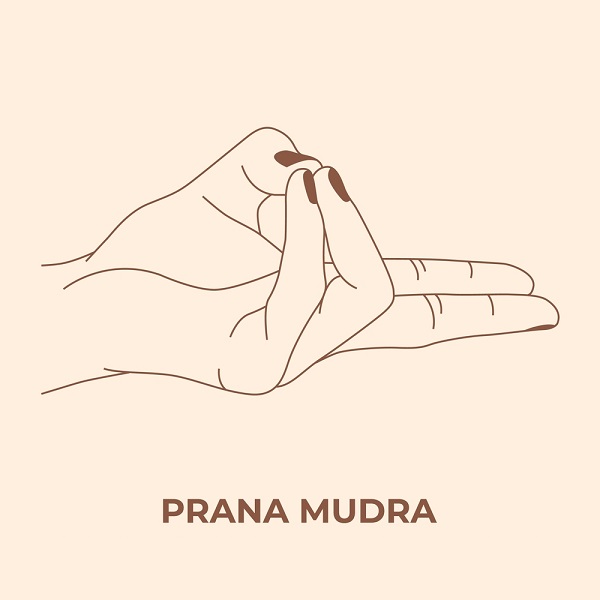
Conclusion
Yoga mudras are a powerful blend of simplicity and depth, offering a direct way to influence our mind, body, and energy. Rooted in ancient Indian wisdom, they connect us to the five essential elements—earth, water, fire, air, and space—bringing harmony to our inner system. Each kind of mudra, whether it be hasta, mana, or kaya, has its function. Whether guiding the flow of energy, calming the mind, or assisting meditation, healing, and awareness work.
We live in today’s fast internet age, and this quiet yet potent practice can help bring balance back into our lives. The fact that they have remained relevant today becomes evident in their increasing appearance during classes at yoga studios, healing therapies, popular science lectures, and on TV. Awareness and the right intention on the part of an individual who practices mudras will lead to increased clarity, emotional stability, and physical vim. To find out more as you explore these ancient techniques in greater depth, join our 200 hour yoga teacher training Rishikesh, at Happy Yoga International where tradition meets transformation.

200 Hours YTTC || 100 Hours YTTC || 300 Hours YTTC || 500 Hours YTTC || Yoga Retreat in Rishikesh
